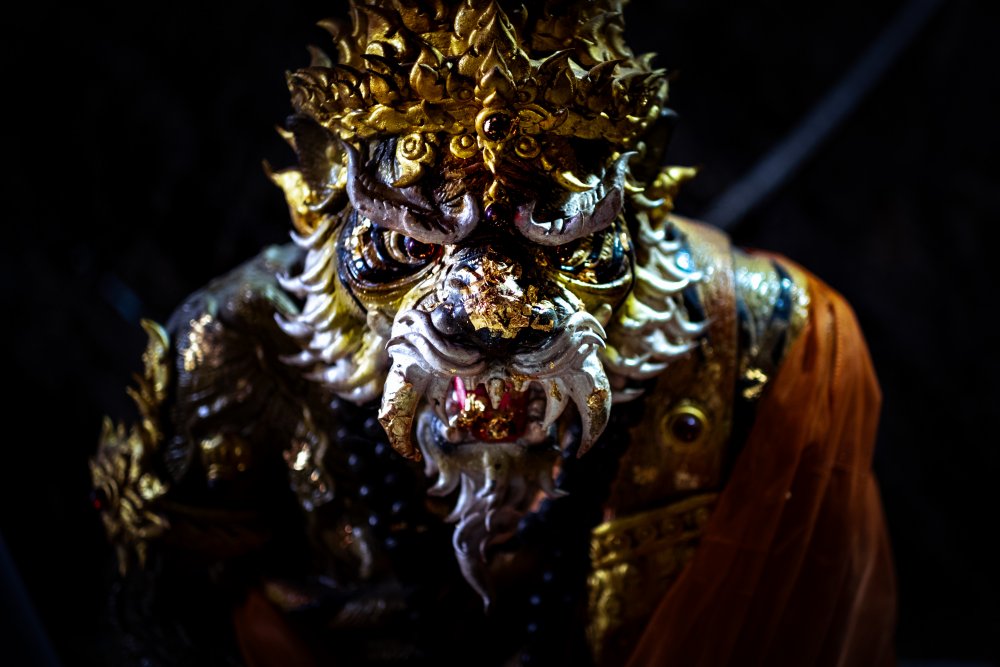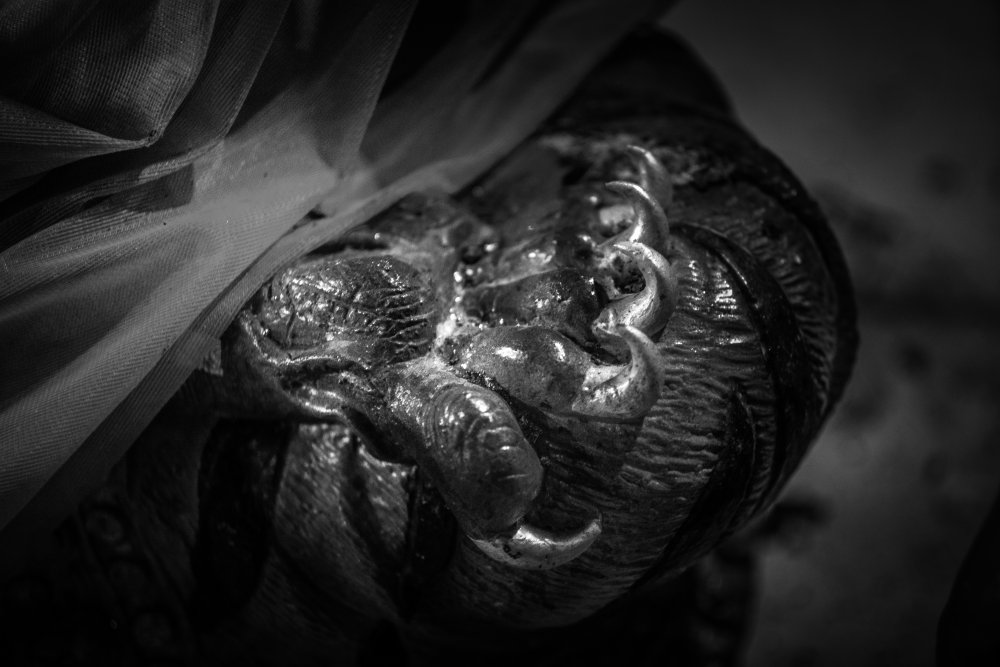Leaderboard
Popular Content
Showing content with the highest reputation on 11/27/2020 in all areas
-
On our visit to Wat Khao Aor in Phatthalung, a 900 year old temple that was built around a sacred cave that likely featured worship for a much longer time. There are stories about the elephant-like shapes in the stone of the cave walls for instance. In that cave now are a host of spiritual figures/statuary as the cave has been a place of organized ceremonial retreat, mediation & merit-making for centuries. Among these figures is a Tiger Ruesi, something that has long captured my imagination, especially as I try to figure out the affective/spiritual path of the Nakmuay in Thailand, the particular way in which Muay Thai mitigates, translates, hones & even amplifies violence, alchemizing it into a artform, and a possibly a minor practice of transcendence. The Tiger Ruesi - and there are many differing tales, and likely differing Ruesi with a Tiger head, is a spiritual (magical) hermit who advanced in his (dark?) arts so thoroughly his head transformed into one of a tiger. One such tale of this event involved dualing Ruesi testing their magic upon each other, but whatever the stories, the figure itself expresses the incredible harmony/dichotomy of a holy man holding both the ferocity of a Tiger's Truth (energy), and the Buddhist epitome of equanimity. He, like the figure itself, feels like a living contradiction...or, a reconciliation of opposites. Below are two photos I took of the figure: It's the second of these photos that I'm really interested in, but the first captures some of that flaming, gold-encrusted (there is leaf on his fangs, etc), eruptive energy in the Tiger. The genuine terror of what a Tiger is. I think for us in the West we have domesticated the Tiger in our minds, a sleek, sexy, dynamic beautiful energy, but that is because we are not connected, historically, to environments where if you walked out alone into the forest or the jungle you might not come back, due to a Tiger. The Tiger is perhaps close to the image we have had of a Great White Shark, which might mercilessly snatch you while swimming, or maybe the uncompromising hunt energy of a wolf. That is the energy that has become magical. The synthesis/tension of the Tiger Ruesi proposes a Thymotic energy resolution. (link divergence: Thymos is this. How Homer treated Thymos. And some of thymos is this. Thymotics and anger. But this is maybe the best treatment of what Thymos is). It is the surging dignity/pride/rage that comes from what feels like an animal core. The Tiger Ruesi, especially this one, seems to have come to hold in one hand both the terrifying ferocity of thymotic rage and Buddhistic repose...like a carefully balanced flame that burns calmly and unwavering in a breezeless room. Most Tiger Ruesi figures show him much more in repose. But this figure is practically erupting with the energy in his face. But...what is very cool is his up-turned clawed palm, an aspect of his meditative posture. This small detail of the statue is just enormous. The claws, the weapons and expressions of his seemingly very nature, are open and relaxed. Anyone who has spread the claws of a cat's paw knows the natural tension that closes them back up. The figure must be so relaxed to have his clawed palm upon up so much. And that one thumb claw that really hangs down drives home the meaning. It's truly spectacular, the poles of the spectrum of experience.1 point
-
What does this mean for the role of rage and/or ferocity in Muay Thai, especially in the Muay Thai of Thailand? Because the Nak Muay himself/herself occupies a hybrid place in the culture, synthesizing holy and (possibly) unholy aspects of the human condition, Thailand's Muay Thai has a special offering to the Western fighter, and even viewer, who is drawn to fighting as an expression of aggression, anger, pride, frustration, rage, either as they occur in themselves or in society. When you train in Thailand you'll hear the Jai yen yen admonition, "Have a cool heart", which can work as a counterbalance to all the hot-hearted drive to the need to fight, or enjoy fights. But Thailand's Muay Thai is not just Jai yen yen. It rather creates a vehicle for sudden violence, even ferocious violence, which can erupt in only a flash, or a wave. Or, it can pulse in a Muay Khao derning. The Buddhistic take on anger and reactive passions certainly about controlling oneself, and ultimately one's mind. But the Tiger Ruesi figure gives us something more. A kind of magical balance where the two sit in repose with each other. The surging Tiger terror lays there in the figure, pulling to mind things like the original meaning of the holy idea of "awe" as it relates to "awful". The full vitality of the Tiger, all of his thymotic real power, lays almost in reserve, perhaps. If you take this meaning and look at the incredible Muay of the Yodmuay of the Golden Age, I believe you can see this simmering vitality on almost all the great fighters, whether it is Samart the Tiger who almost never has to get up from his rest in the shade, or Dieselnoi who stalks, counters and then threshes his opponent savagely, or Karuhat who silkily moves from rope to rope, and then strikes a mortal blow, decisively turning the fight. At the highest levels this seems to be the art of Muay Thai, and as we look at the yodmuay of the past we can see the infinite variety of the ways that Tiger Energy has been alchemized into personality and style. As a western fighter coming to Thailand this is what, perhaps, the art and training has to offer. A more nuanced and pronounced way to express your thymotic energies. It is not just "Jai yen yen", it is Jai yen yen so that the Tiger can come out beautifully, expressively, in control of itself, striding and in full glory. At least that is what it seems like to me, come from the years I've spent in gyms all over Thailand, and from being in the presence of so many past great fighters. They all are Tigers.1 point
-
Now, the history of high level Muay Thai is not filled with "Tiger Energy" fighters. In fact we've filmed with almost a 100 legends and ex-fighters and only come upon it in a few times. Notably, when in the ring with Sagat Petchyindee, you can just feel it emanate off of him. You can see it in this slow motion we took of his shadow: (link divergence: You can see it more in particular in the Muay Thai Library sessions we filmed with him: #69 Sagat Petchyindee 3 - Muay Maat Tigers & Snakes (67 min) watch it here , #60 Sagat Petchindee Session 2 - All the Strikes Tuned and Dangerous (101 min) watch it here , #38 Sagat Petchyindee (part 2) - Maximum Damage (61 min) watch it here , #26 Sagat Petchyindee - Explosive Power (57 min) watch it here ) This is to say, the higher level affect dynamics of Thailand's traditional Muay Thai is not fundamentally a synthesis of Tiger Energy, per se, but Tiger Energy does propose a kind of extreme (thymotic) energy what indeed needs to be given a vehicle of artful expression. And, at least to my eyes, the figure of the Tiger Ruesi holy man, brings this alchemy of thymotic anger and rage into close view. In the west we have synthetic/dichotomous figures which talk to that problematic. The Minotaur of Ancient Greece The Gothic Werewolf Contemporary Hulk It is as if Western Civilization has been trying to process this rage/pride/thymos synthesis for 2,500 years. That is what make the art and tradition of Muay Thai so very interesting to the western problematic. And, suggestively, the Thai Buddhistic tradition of magical synthesis, which aim to generate this resolution at the highest level. In the larger scope, it is the way in which Thailand's Muay Thai processes and redirects typified western affects of rage and anger (and the host of emotions expressed by aggro-fighting in western oriented promotions) into an art form of spatial and personal control, maintaining their edge and sharpness, but held more close to the vest, honed liked a Japanese sword...perhaps, that proves the value of Thailand's historical Muay Thai, a martial combat sport that has been closely braided to long standing principles of Buddhism. That a Tiger Ruesi can exist as an acme holy figure in Thailand's Buddhism points the way toward the resolutions and expressions of ferocity by the Nak Muay that make Thailand's Muay Thai like no other fighting art.1 point
Footer title
This content can be configured within your theme settings in your ACP. You can add any HTML including images, paragraphs and lists.
Footer title
This content can be configured within your theme settings in your ACP. You can add any HTML including images, paragraphs and lists.
Footer title
This content can be configured within your theme settings in your ACP. You can add any HTML including images, paragraphs and lists.

